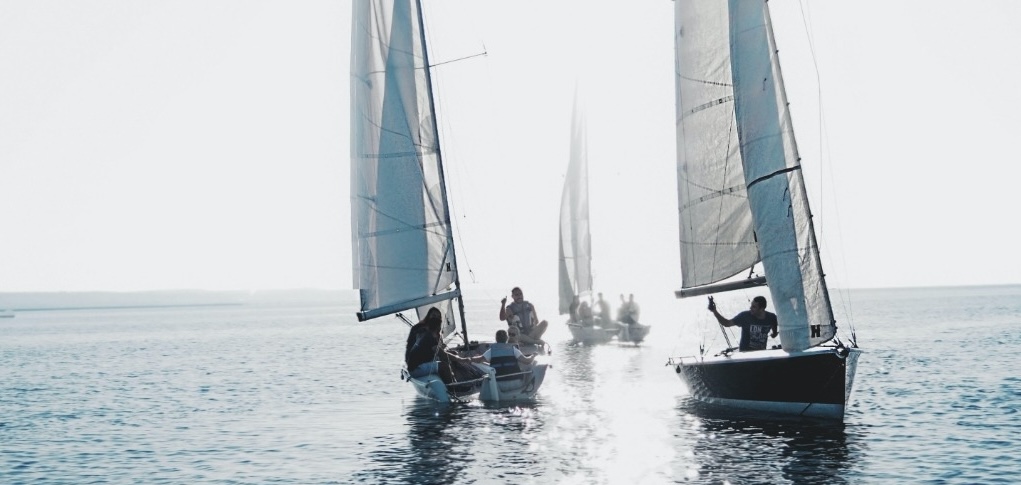SailZoo Blog
How to measure up for a new sail and choose fabric
In this article, we take a closer look at the factors to consider when measuring for sails and choosing sailcloth.

Choosing new sails and canvas is an important, and often heavy financial decision for any sailor. The performance and handling of your boat can vary greatly depending on the shape, size and fabric you choose.
How do I choose the right sailcloth?
When it's time to buy new sails, it's a good idea to consider the following:
The type of sailing: Different sailcloths are better suited to different types of sailing. For example, racing sails are usually made of a lightweight, high-performance material, while cruising sails are usually made of a heavier, more durable material.
The size and shape of your sail: The size and shape of your sail determines how much sailcloth you need and what type of sailcloth works best.
The load on the sling: The load on the sail - or the amount of force the sail will be exposed to - will also affect your choice of sailcloth. You want to choose a sailcloth that suits the wind conditions you'll be sailing in.
Here in Denmark - and the rest of Scandinavia - we have a varied climate with cold winters and relatively mild summers. The winds can be strong and gusty, especially along our coasts. If you also sail during the winter season, you'll find that the wind is "heavier" than in the summer. Cold air offers more resistance than warm air.
This budget: Of course, different sailcloths have different price levels, so you should consider your budget when choosing a sailcloth.
Some of the most common materials used for sailcloth include polyester, nylon and laminate. Polyester is a strong, durable material that is resistant to stretching, but it is also heavier than other materials. Nylon is a lightweight, flexible material that is great for racing sails, but it is not as durable as polyester. Laminate materials such as Dacron and Kevlar offer a balance of strength, weight and durability.
It is a good idea to consult with a sailmaker or other expert to find the best sailcloth for your specific needs. They can help you choose a sailcloth that will work well and fit your budget.
Measuring for a new sail - what are the most important goals?
Mainsail:
When measuring for a new mainsail, the three most important measurements to make are the luff length, foot length and leech length.
Length of settlement (P-measure): This is the distance from the top of the sail to the point where the sail attaches to the mast. It is important to measure the luff accurately so that the sail fits properly to the mast and can be tensioned correctly.
Length of weird (E-measure): This is the distance along the bottom edge of the sail. From the edge of the mast to where the sail will stop on the boom. The foot length determines the overall size and shape of the sail.
Length of leech (AL measurement): This is the distance along the trailing edge of the sail, from the top of the sail to the back of the boom. The leech determines the shape of the sail when fully extended.
Other measurements that can be taken when measuring for a new mainsail include the length from mast to backstay, foot width, luff width and sail depth. These measurements help ensure the sail is correctly shaped and sized for your boat.
Headsail:
When measuring for a new headsail or genoa, the most important measurements are luff, leech, luff and also J-measurements.
Settlement (Y goal): This is the distance measured from the shackle on the halyard swivel (which is raised to the top) to the point where the sail attaches to the forestay or drum (roller forestay). It is important to measure the maximum length of the luff accurately so that the sail fits correctly on the forestay and can be tensioned properly.
Weird (U-goal): This is the distance along the bottom edge of the sail, from the shackle where the front corner of the sail attaches to the boat to where the lap attaches to the sail (the rear corner where the sail attaches to the boat).
Agterlig (A goal): This is the distance along the trailing edge of the sail, or, from the top of the halyard swivel to the lap. The luff length determines the shape of the sail when it is fully extended.
J-target (also called LP in English): The size of a genoa is often described as, for example, 100%, 135% or 150%. These percentages are based on the J-measurement, which is the distance along the deck of the boat measured from the forestay to the mast.
There are several types of measurements for measuring sails, which can vary from sailmaker to sailmaker. In our experience, it's often a good idea to have the measurements for your boat written down on board your boat. That way you'll have them at your disposal in case of an accident; for example, if you're on vacation and find yourself in a situation with broken sails and need to get your hands on a new used sail as soon as possible so your vacation can continue.
If you need new sails, we of course recommend that you consult with a professional sailmaker who can help you measure correctly.
Written by Mads SailZoo day 20. January 2023

Sign up for newsletter
Stay tuned for new sailing articles, sailing industry news and early access to new features.
Also see








.png/)


.png/)




.png/)



